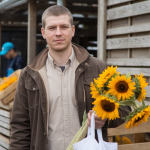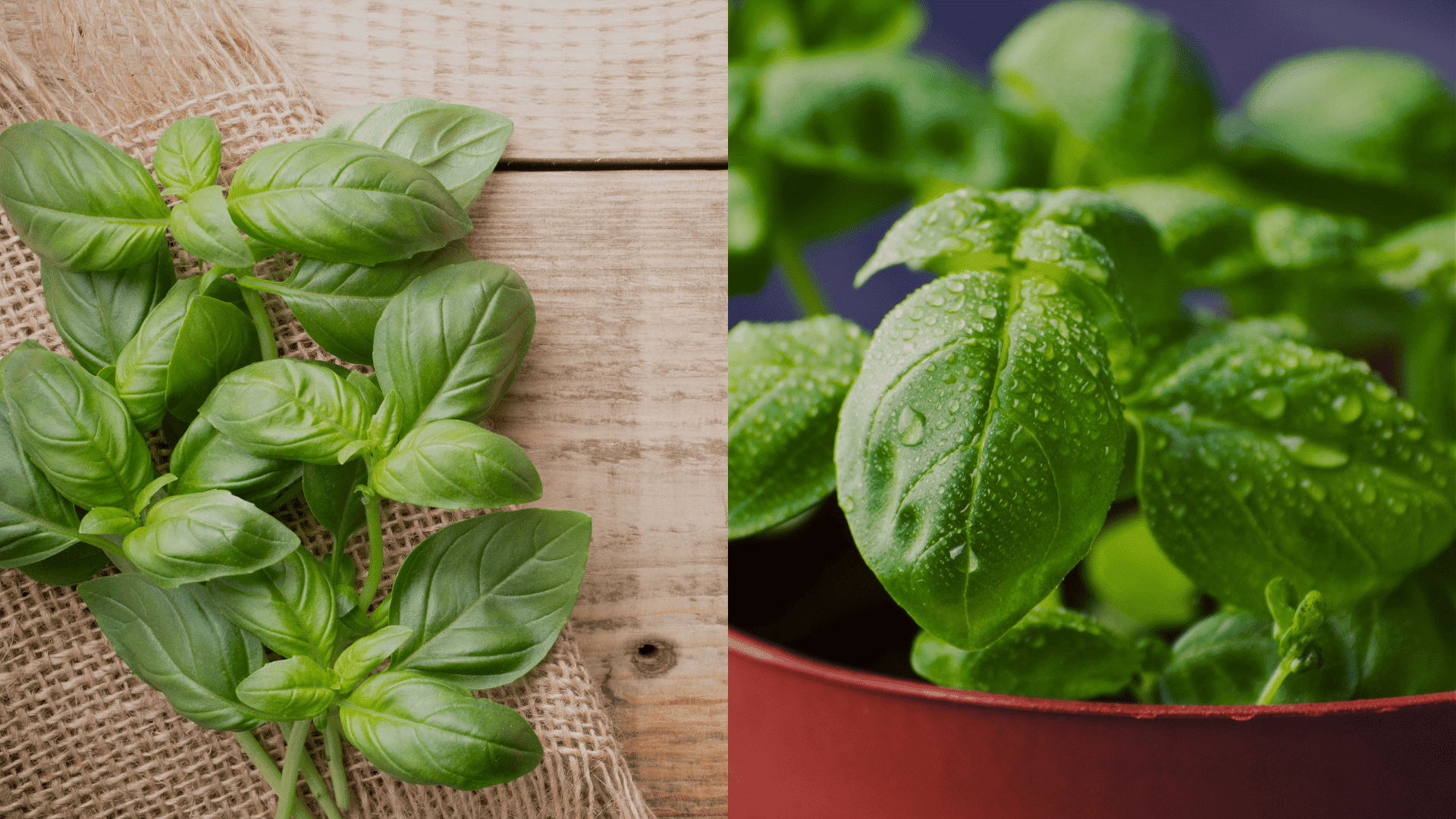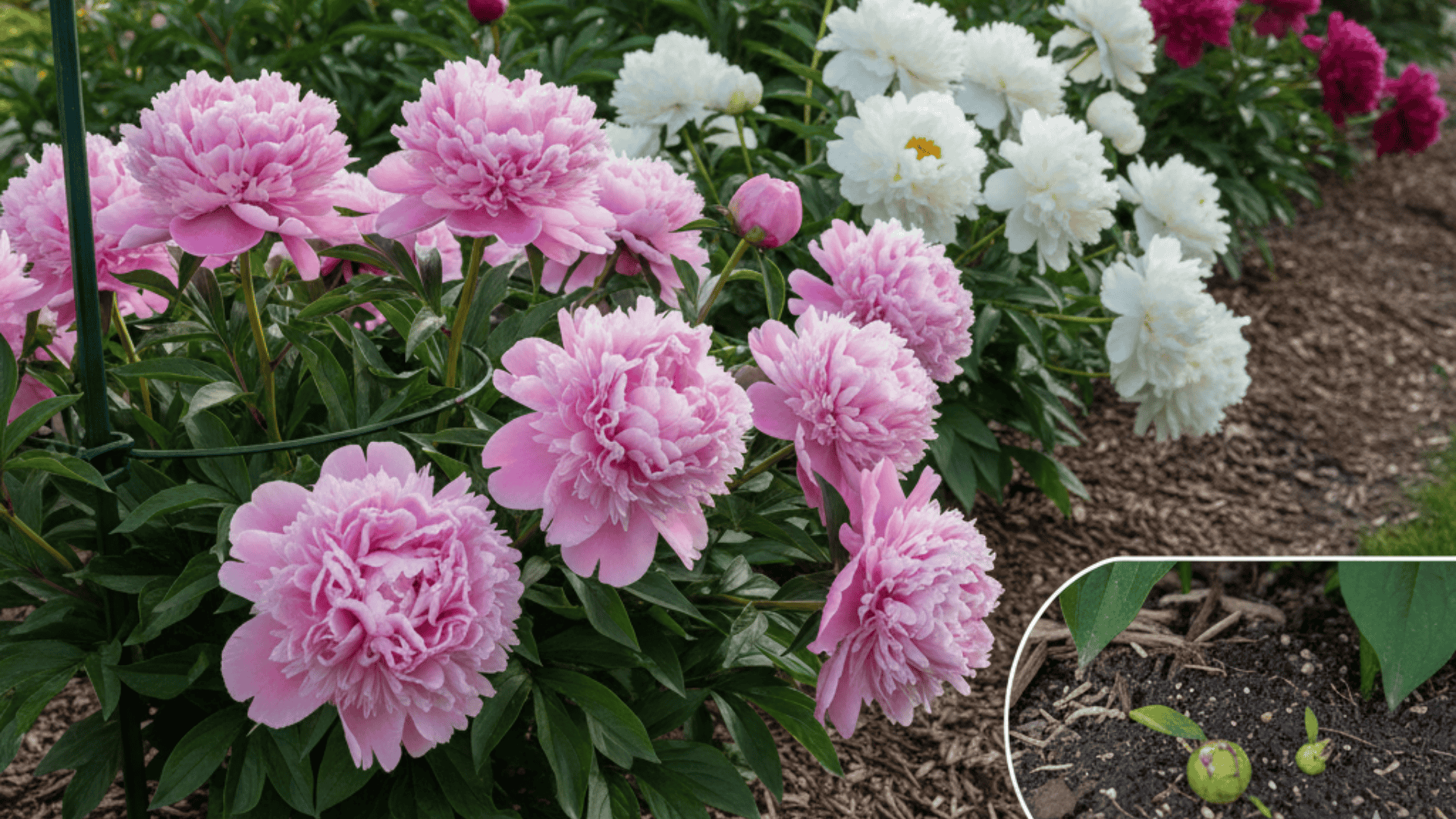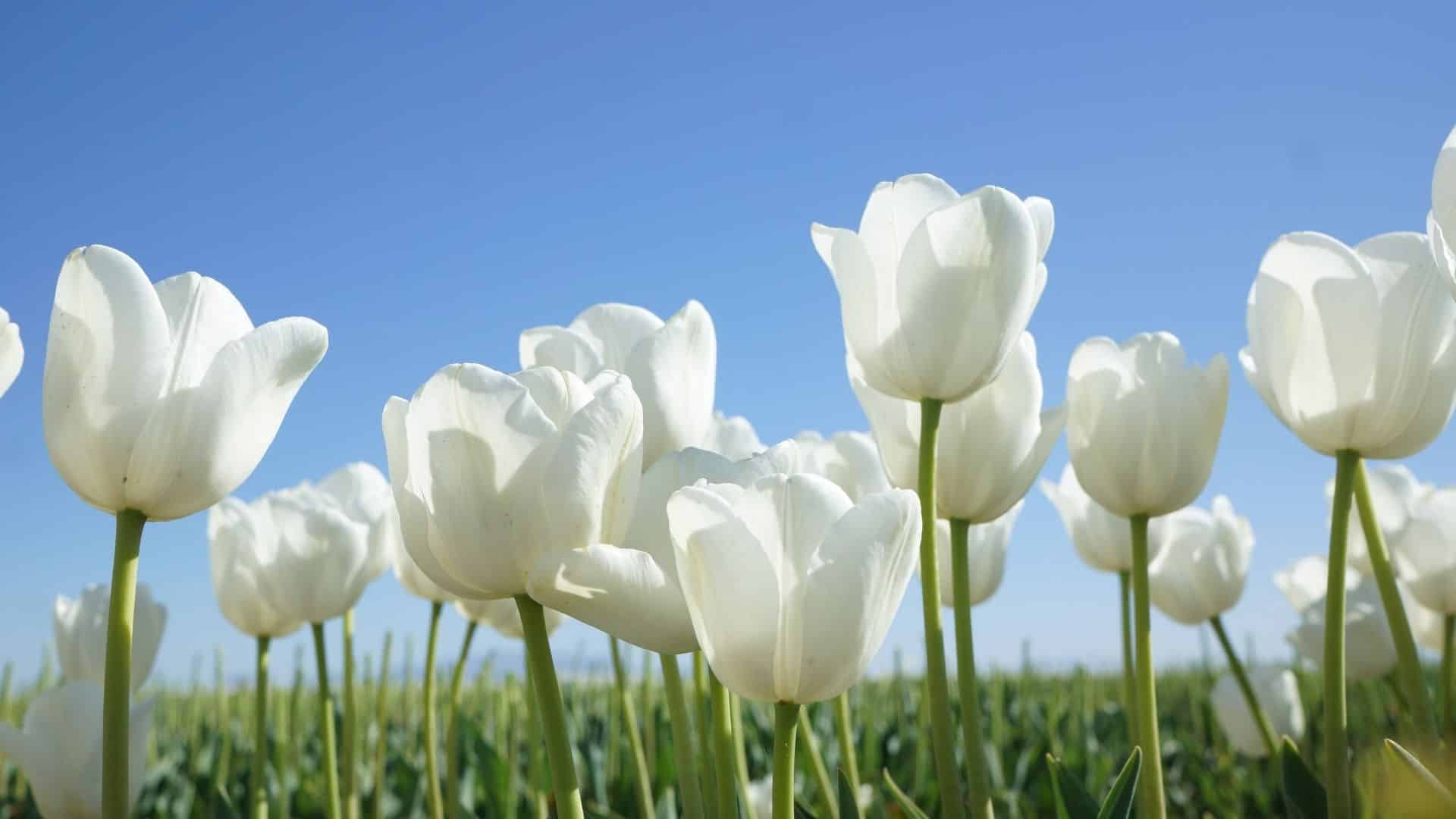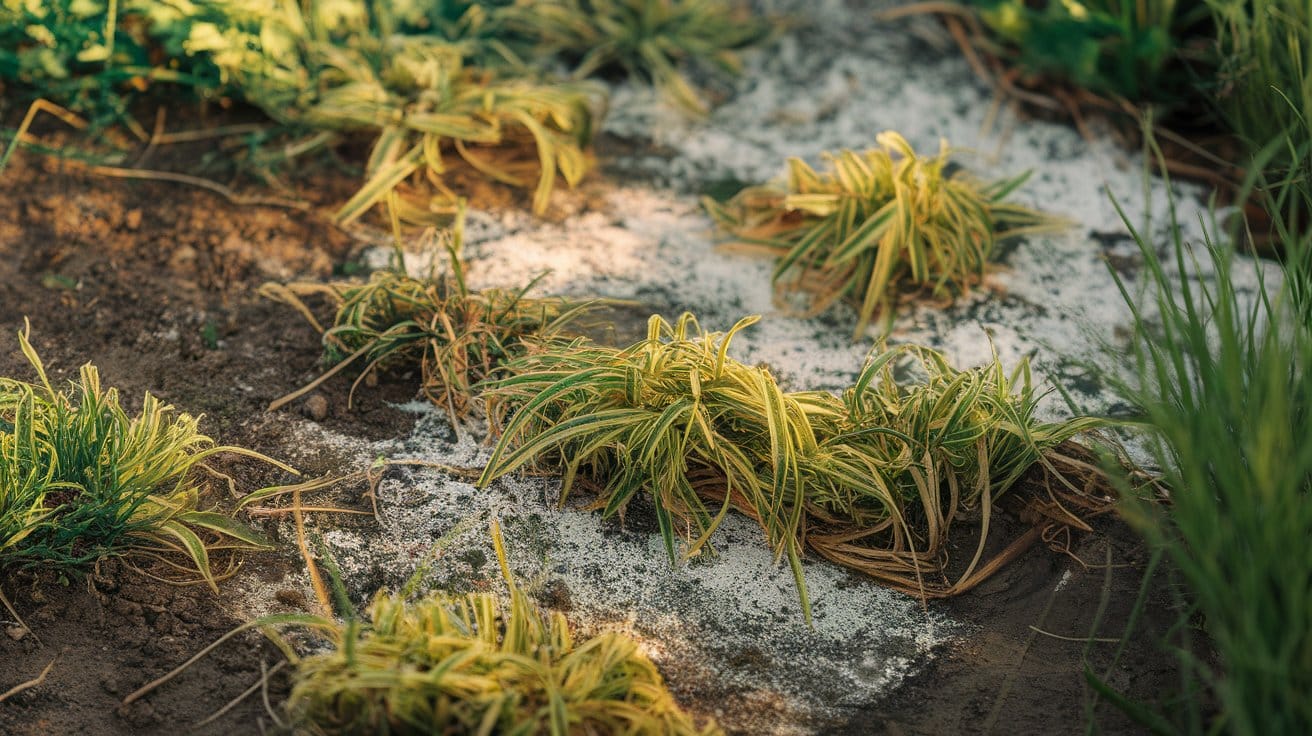What if you could fill your garden with fragrant purple blooms for just the cost of a seed packet?
Lavender wins hearts with its calming scent, beautiful purple flowers, and ability to bring bees and butterflies to your garden.
Many people think growing lavender from seed is hard or takes too long.
Well, the truth is, with the right steps and a little patience, you can grow lavender in pots.
Here, you’ll learn everything from picking seeds to planting young lavender in your garden in simple and easy-to-use instructions.
Still not satisfied with the look of your balcony, why not to go for beautiful tulips? Learn How to Plant Tulip Bulbs in Pots and Care for Them
About Lavender Plant
Several lavender varieties can be grown from seed, but some sprout more reliably than others.
Knowing which types work best for your climate and understanding why lavender seeds germinate slowly will improve your success rate.
| Category | Information |
|---|---|
| Common Name | Lavender |
| Scientific Name | Lavandula spp. |
| Best Climate | Warm, dry, and sunny |
| Sunlight Requirement | Full sun (6–8 hours daily) |
| Soil Type | Well-drained, sandy or loamy soil |
| Soil pH | Neutral to slightly alkaline (6.5–7.5) |
| Watering Needs | Low; water deeply but infrequently |
| Propagation | From cuttings or seeds |
| Blooming Season | Late spring to early summer |
| Common Uses | Fragrance, essential oils, decoration, and herbal remedies |
Common Lavender Varieties to Grow from Seed
Each lavender type grows differently depending on your climate.
Learn which varieties work best and why these seeds take time to sprout.
1. English lavender (Lavandula angustifolia): Most popular for home gardens, cold-hardy, and highly fragrant.
2. French lavender (Lavandula dentata): Thrives in warm climates with serrated leaves and a unique scent.
3. Spanish lavender (Lavandula stoechas): Features distinctive “rabbit ear” blooms, great for decoration.
4. Lavandin (Lavandula x intermedia): A hybrid variety that grows larger and produces abundant flowers for crafts.
When to Plant Lavender Seeds?
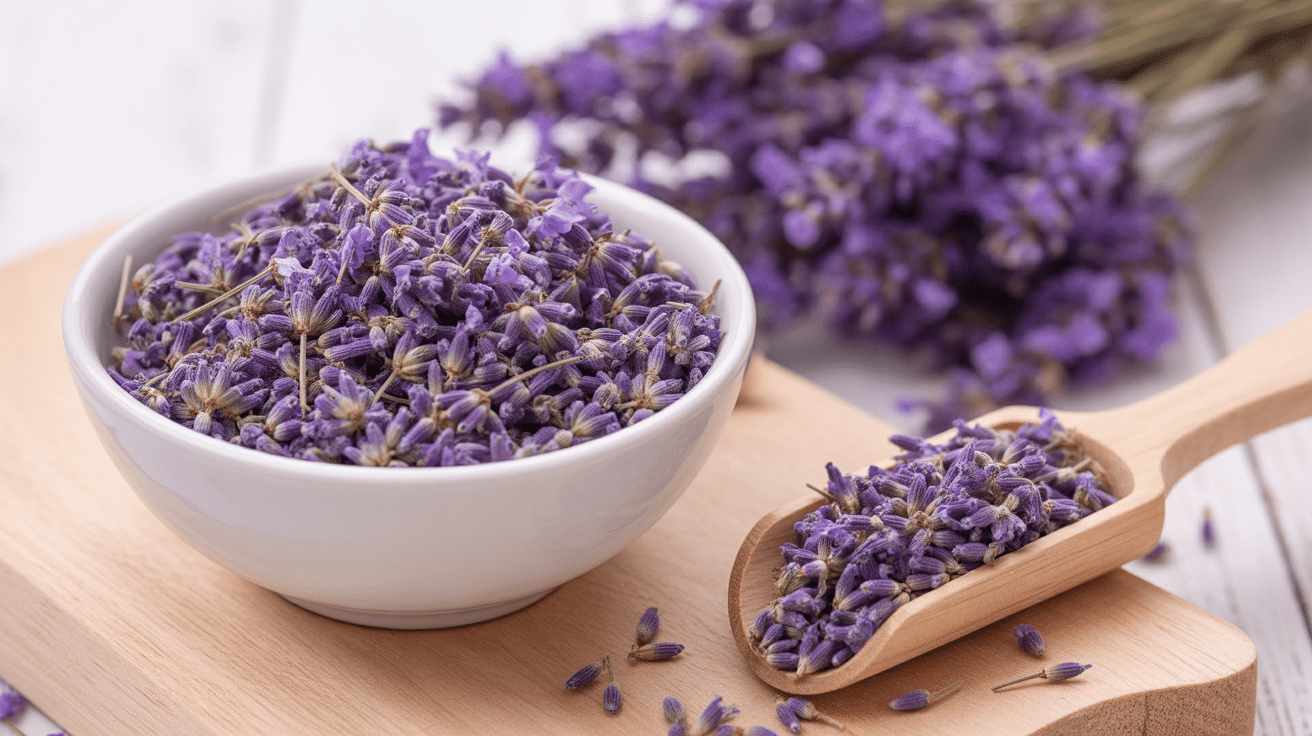
Your planting schedule depends on your climate zone.
Starting seeds at the right time gives seedlings enough time to grow strong before facing extreme weather.
Here’s when to begin based on where you live.
Warm Climate (USDA Zones 7-10)
In areas with mild winters and hot summers, timing your seed starting correctly helps avoid summer stress.
- Best time to start: Late fall or early winter (November to January)
- Why this timing works: Plants develop in cool weather and establish roots before summer heat arrives.
Cold Climate (USDA Zones 3-6)
In regions with freezing winters, proper timing ensures seedlings are ready after the last frost.
- Best time to start: Late winter (February to March)
- Why this timing works: Plants are ready after the last frost and have time to establish before winter.
How to Grow Lavender from Seed Indoors (Step-by-Step Process)
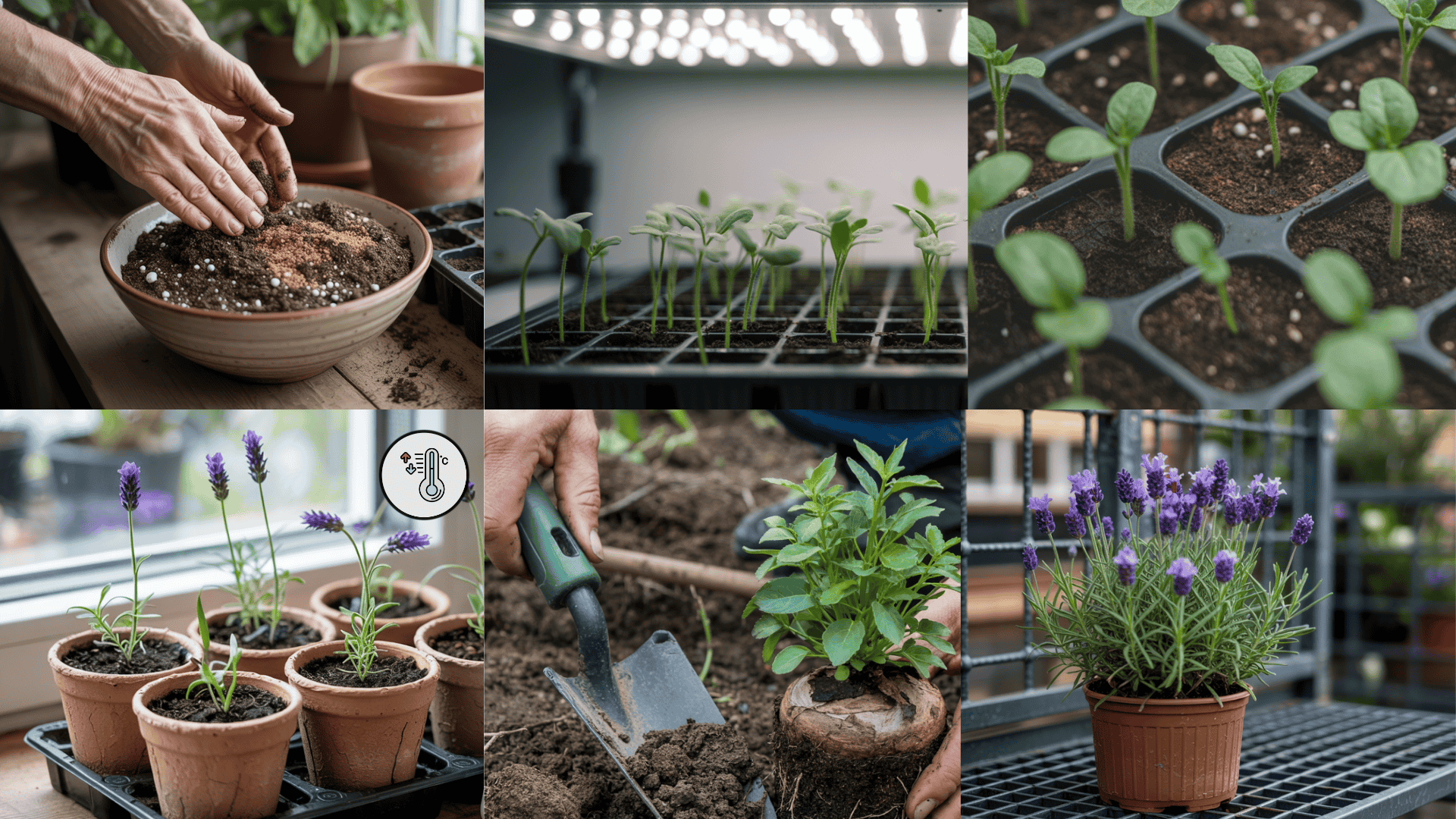
Growing lavender from seed indoors gives you control over growing conditions and allows you to start plants regardless of outdoor weather.
Follow these steps for successful germination and healthy seedlings.
Step 1. Prepare the Soil and Containers
Start with a well-draining soil mix and combine equal parts of seed-starting medium with perlite or coarse sand to improve drainage.
If you’re growing lavender in pots, this mix helps maintain the right moisture balance for container plants.
This ensures water doesn’t stay trapped, preventing root rot.
Use seed trays or small pots with drainage holes and fill with soil, leaving half an inch at the top to prevent overflow.
Step 2. Cold Stratify the Seeds
Lavender seeds germinate best after a period of cold treatment, which mimics winter dormancy.
Place seeds in a damp paper towel, seal them in a plastic bag, and refrigerate for 3–4 weeks.
This process increases germination rates and helps seedlings grow stronger.
Step 3. Sowing the Seeds
After stratification, press seeds lightly into the soil surface but don’t bury them deeply.
Lavender seeds need light to germinate. Mist the soil gently to keep it moist but not soggy.
Cover the tray with a clear plastic dome or wrap to maintain humidity.
Keep the setup in a bright area but out of direct sunlight until seedlings emerge.
Step 4. Create the Right Condition for Growing Lavender in Pots
Maintain a steady temperature of around 65–70°F (18–21°C).
Lavender prefers warmth, so consider placing the tray near a heat source or using a seedling heat mat.
Once seedlings sprout, provide them with 6–8 hours of bright light daily.
A south-facing window works well, but grow lights ensure consistent growth in low-light spaces.
Step 5. Transplanting Seedlings
Transplant lavender seedlings when they have two or three sets of true leaves.
Before moving them outdoors, harden them off by gradually exposing them to outside conditions over a week.
Plant them 12–18 inches apart in full sun and well-draining soil.
Lavender dislikes heavy or waterlogged soil, so raised beds or sandy loam are ideal.
What to Remember: When growing lavender in pots, select terracotta or clay containers with sandy soil for good drainage and healthy roots.
Growing Lavender as a Companion Plant
Lavender doesn’t just add color and fragrance; it also helps nearby plants grow better. Its scent repels pests, and its flowers attract bees and butterflies for pollination.
Benefits of Growing Lavender as a Companion Plant are:
- Repels pests: Keeps aphids, moths, and mosquitoes away.
- Attracts pollinators: Brings bees and butterflies to your garden.
- Improves airflow: Bushy shape prevents overcrowding.
- Adds fragrance: Works as a natural border with a pleasant scent.
Best and Worst Lavender Companions Plant
| Best Companions | Avoid Planting With |
|---|---|
| Rosemary and Sage: Share similar sun and soil needs; ideal for herb gardens. | Mint and Basil: Need frequent watering, which can harm lavender roots. |
| Echinacea and Yarrow: Drought-tolerant and attract pollinators. | Hostas and Ferns: Prefer shade and damp soil, opposite of lavender’s needs. |
| Roses: Lavender deters pests and enhances rose fragrance. | Impatiens: Thrive in cool, moist conditions unsuitable for lavender. |
| Thyme and Oregano: Grow well in dry, well-drained soil beside lavender. | Camellias: Favor acidic, moist soil and partial shade, which lavender dislikes. |
Group lavender with sun-loving herbs and flowers.
If pairing with water-loving plants, use separate containers or raised sections to control watering.
Also read about the best companion plants for Echinacea.
After Planting Care Tips for Growing Lavender in a Pot
Caring for young lavender plants ensures they grow strong and fragrant.
Follow these simple tips to promote healthy roots, compact growth, and abundant blooms.
- Watering: Keep soil lightly moist for the first few weeks after sprouting, then water less often as roots develop.
- Light: Provide 6-8 hours of direct sunlight or use grow lights positioned 2-4 inches above plants.
- Pruning: When seedlings reach 3-4 inches tall, pinch off the top growing tip to encourage bushier, fuller growth.
- Fertilizing: Avoid heavy feeding. Young lavender grows best in lean soil and doesn’t need rich nutrients.
Common Problems with Lavender Plants
Lavender may experience a few issues, but with proper care, they’re easy to manage.
| Problem | Cause | Solution |
|---|---|---|
| Poor Germination | Old seeds, cold soil, or uneven moisture. | Use fresh seeds, keep the soil warm, and water evenly. |
| Root Rot | Overwatering or poor drainage. | Let the soil dry, improve drainage, and trim damaged roots. |
| Yellowing Leaves | Too much water or temperature stress. | Adjust watering, check drainage, and protect from heat or cold. |
| Woody Growth | Aging stems reduce flowering. | Prune after flowering to encourage new growth. |
| Fungal Diseases | High humidity and poor airflow. | Space plants well and water at the soil level. |
Conclusion
Growing lavender from seed takes time and attention but brings rewarding results.
With proper care, sunlight, and watering, the plant grows strong and full of fragrance.
Lavender grown indoors or in pots adds calm beauty and a pleasant scent to your home or garden.
These simple steps can turn small seeds into vibrant plants that last for years.
Start growing your healthy Lavender garden from today!
Share your growing tips or success stories in the comments below to inspire other gardeners.
Frequently Asked Questions
Can you Sow Lavender Seeds in the Fall?
Yes, you can sow them in the fall if winters are mild. Cooler temperatures allow natural stratification, helping seeds sprout stronger in spring.
What Not to Plant Around Lavender?
Avoid planting lavender near moisture-loving plants like mint or hostas. They prefer wetter soil, which can harm lavender’s roots and growth.
Are You Supposed to Cut Lavender Back Every Year?
Yes, prune lavender yearly after flowering to remove woody stems. Regular trimming keeps plants healthy, full, and encourages new fragrant blooms.


